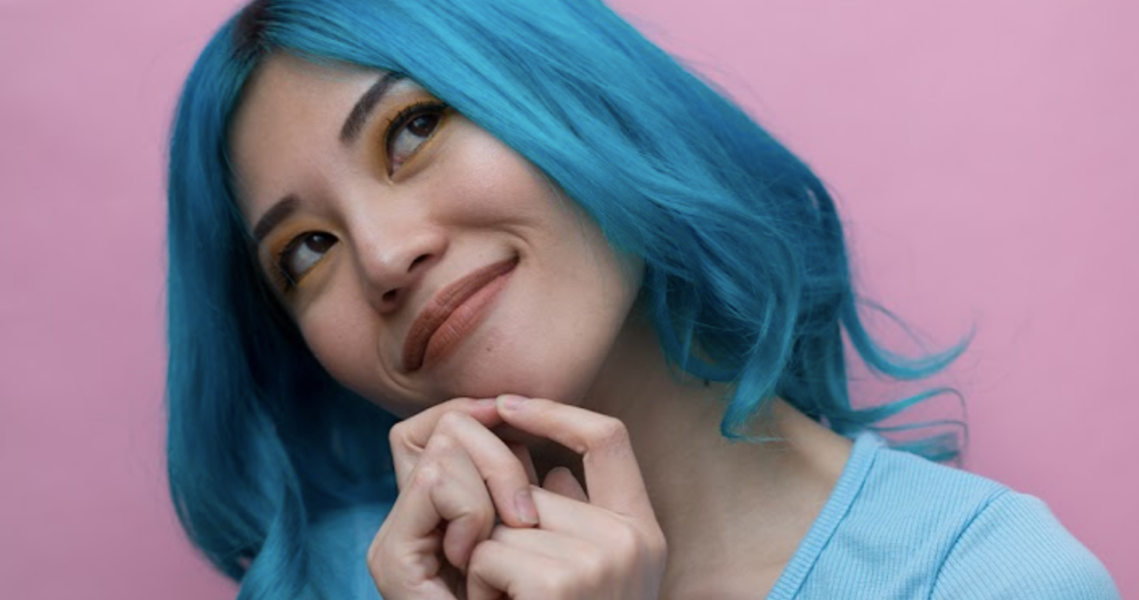On Tuesday, color cosmetics brand Lime Crime refreshed its brand positioning to spotlight self-expression and its vegan and cruelty-free products.
Andrea Blieden, Lime Crime CEO who joined the brand in May 2020, said she felt the brand had been more product-focused in the past, when it came to marketing and communications. Under the rebrand, rather than existing in a vacuum, products are meant to be a conduit to explain the brand’s values. Lime Crime’s values relate to standing out and using makeup and hair dye as a way to be creative, rather than as a way to perfect or enhance one’s appearance. The 13-year-old brand is working with five paid influencers between May and August to bring to demonstrate these concepts. It is also the first time the brand is doing a full-funnel activation; the campaign will appear on Snapchat, TikTok, YouTube ads, Pinterest, Facebook and Instagram. Blieden said it is the largest single investment in media in the history of Lime Crime, adding that the brand’s sales are evenly split between DTC e-commerce and wholesale retailers like Ulta and Sally Beauty. Lime Crime aims to grow its sales for 2021 by double digits.
“Lime Crime is a brand that was started by influencers… In 2008, Lime Crime was one of the first brands to really capitalize on influencers as its main form of marketing and outreach. [So this is] also a nice nod to how we started,” said Blieden. “The timing of this could not be more perfect because the world is getting back [outside], and people [are back to] expressing themselves through makeup and color.”
The influencer assets consist of six– and 15-second long videos with people like Jasmine Moore (@JustSeconds; 81,300 Instagram followers), shown rollerskating around Los Angeles, and Sangyay Chen (@SangyayChen; 231,000 Instagram followers), shown conducting multiple hair dye transformations. Rather than models with highly produced makeup looks, the focus is on the influencers and how they play with makeup, followed by how they react to that transformation. (Each of the influencers did their own makeup looks.) Lime Crime is hoping to sign on its first brand ambassador at an undetermined time. The success of the relaunch campaign will be measured based on the number of media impressions, e-commerce website visits and purchase conversions.
According to Megan Jones, vp and partner at digital marketing agency January Digital, the beauty industry has gone through a significant transformation in the way brands talk about products versus brand story. In the mid-2000s, indie brands focused on marketing hero products in order to break through to consumers and gain both sales and loyalty. This then became a widespread practice that diluted overall customer brand loyalty, as brands focused only on singular products.
“The consumer wants inclusivity, authenticity and sustainability,” said Jones. “Gen Z and millennials are asking for brand stories. They want to go back to a more loyal buying process, but they really need to believe and understand what these brands stand for, in a simple way.”
For a brand like Lime Crime, limitations exist when it comes to putting the brand’s story front and center. A controversial founder (who exited the brand in 2018) makes an origin story and a founder focus impossible. But, the brand’s history around color cosmetics and their use as a creative outlet is consistent; notably, the brand has never offered foundation or concealer, which hide or “perfect” the skin. The tagline for the relaunch campaign is “Never blend in.”
Ad position: web_incontent_pos1
“When you look at who Lime Crime caters to — that 15- to 29-year-old audience, Gen Z and millennials — they care about the brand that they’re buying from more so than ever,” said Blieden. “As brands moved toward a direction of being more holistic, Lime Crime became product-focused. This [relaunch] gives us a moment to introduce our brand to the people who have been buying it and to new people.”
For now, the rebrand does not impact Lime Crime’s product portfolio, Blieden said. At an undetermined time, the brand may revisit its packaging, including making it more sustainable in 2022, she added. In March, Lime Crime hair dye began selling at Sally Beauty. Under the rebrand, hair color will continue to be a focus: It will launch bleach kits in April, plus it will introduce a new hair-focused content vertical on its e-commerce site on Tuesday. Dubbed the “Hair Hub” it contains a five-question quiz to match with hair products and short how-to videos on at-home hair dying. Lime Crime is trying to emphasize the ease of at-home hair dying and to dispel customer concerns around hair dying mishaps.
Blieden said that hair care sales on the brand’s DTC e-commerce site doubled in 2020 and that Lime Crime expects the category to double again in 2021. In 2019, it made up 20% of the brand’s sales, according to previous Glossy reporting.
“Whether it’s dyeing their hair, using fun eyeliner looks at home or roller skating, [the brand is about] telling the story of Lime Crime and how you can never blend in using it,” said Blieden.




